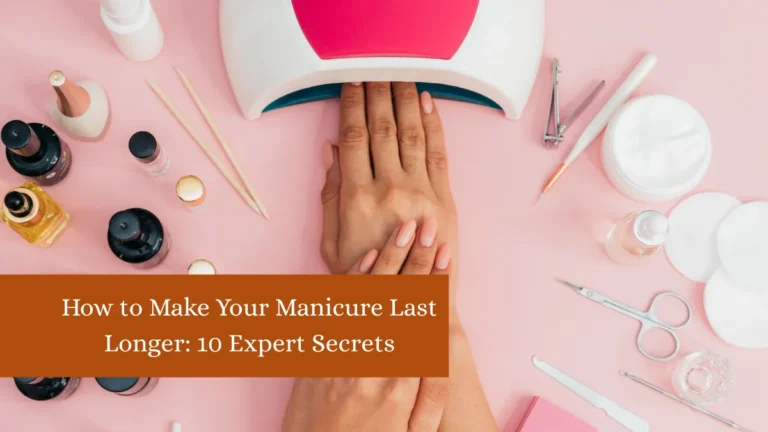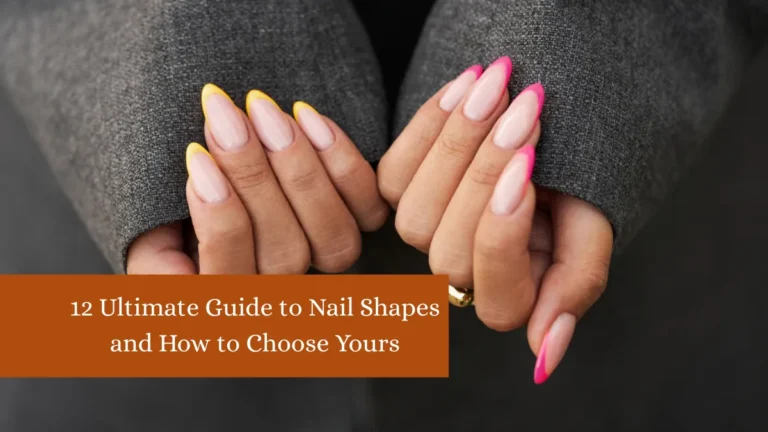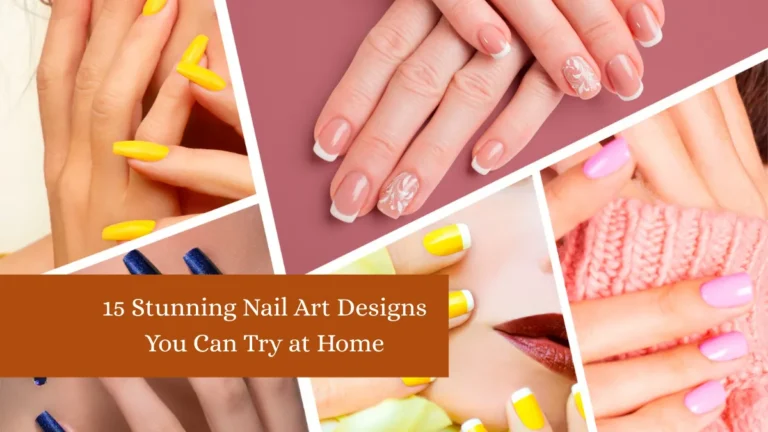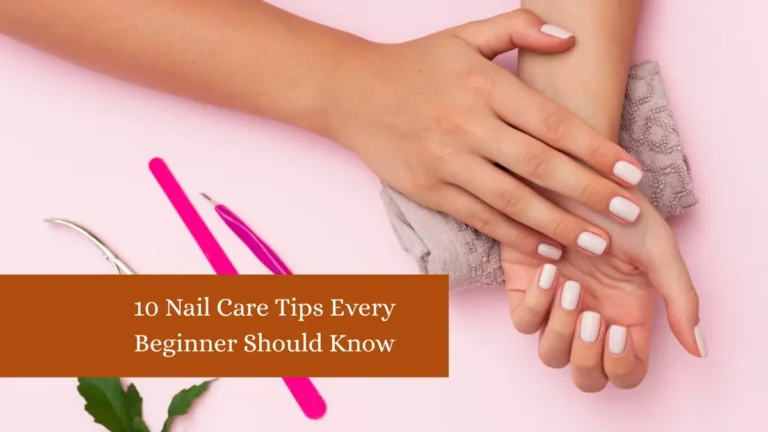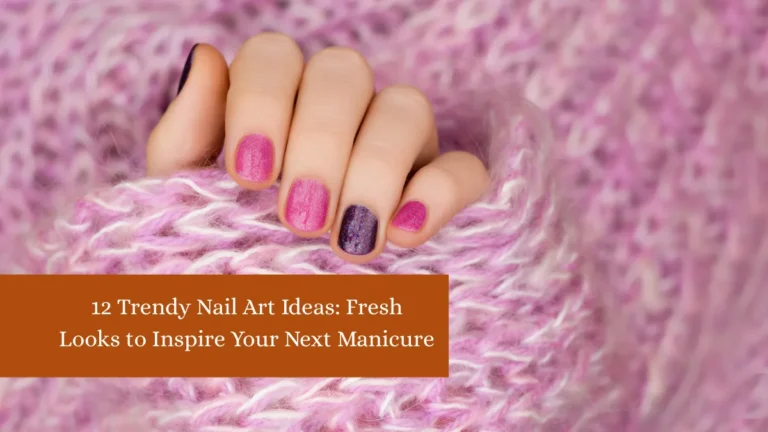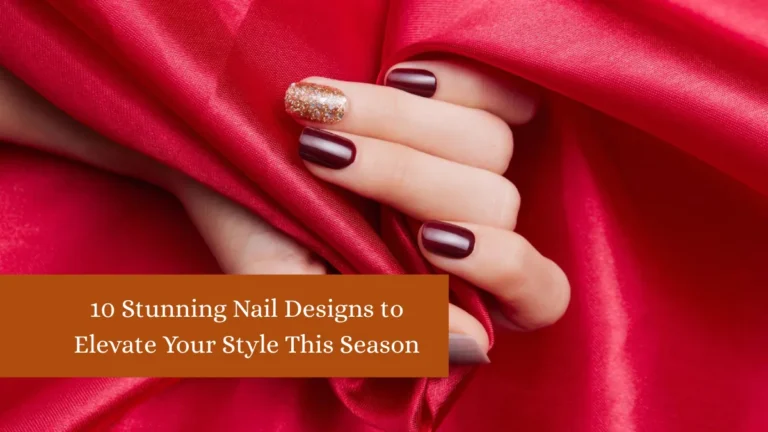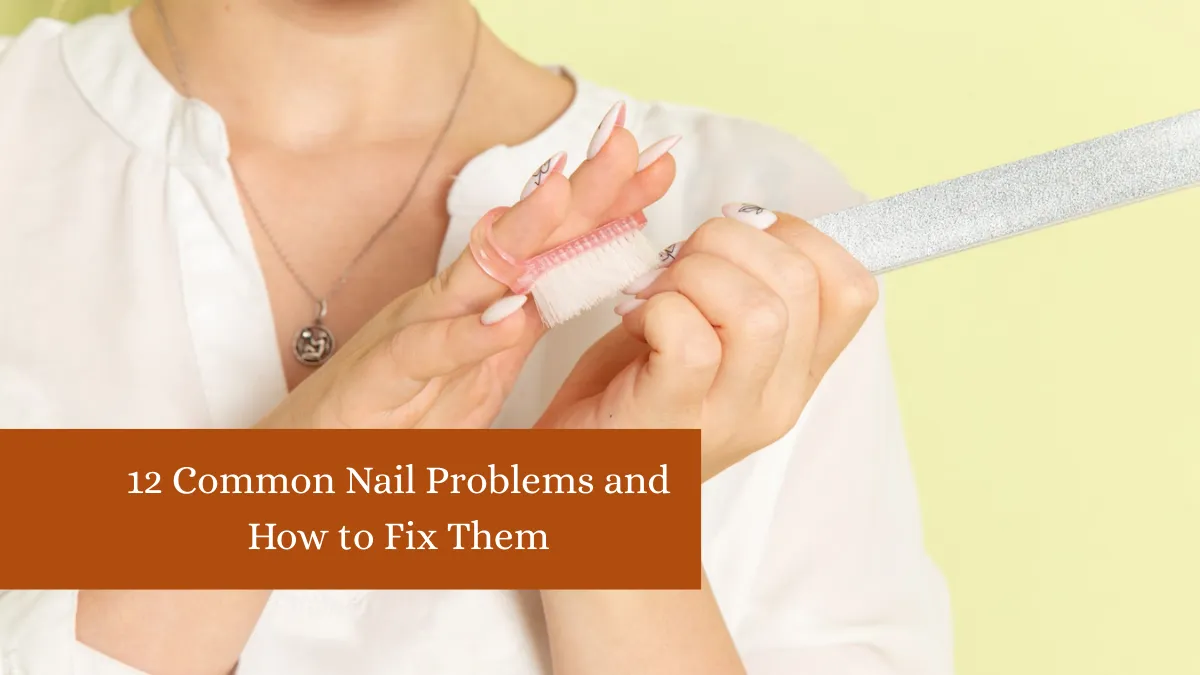Nails might be small, but they can reveal a lot about your overall health and lifestyle. From discoloration to breakage, nail problems are not only frustrating but sometimes a sign of deeper health issues. Many people ignore nail concerns until they worsen, leading to pain, infection, or lasting damage. Knowing the common nail problems and their solutions can save you time, money, and discomfort.
The good news is that most nail issues can be treated or prevented with proper care, hygiene, and in some cases, minor lifestyle adjustments. Whether your nails are weak, brittle, or suffering from stubborn infections, understanding the cause is the first step toward healthier, more attractive nails. In this guide, we’ll explore twelve common nail problems, their causes, and practical ways to fix them, so you can restore strength, beauty, and confidence to your fingertips.
1. Brittle Nails
Brittle nails, which crack, chip, or split easily, are a common problem caused by dryness, frequent handwashing, or repeated exposure to harsh chemicals. They can also be linked to nutritional deficiencies, especially in biotin, iron, and zinc. Overuse of nail polish removers containing acetone can strip natural oils, making nails more fragile. Environmental factors like cold weather and low humidity also play a role. To fix brittle nails, moisturize regularly with a cuticle oil or hand cream that contains vitamin E.
Wear gloves when cleaning or washing dishes to prevent excessive water exposure. Avoid using nails as tools to open or scrape objects. A diet rich in protein, leafy greens, and nuts can strengthen nails from within. You may also consider a biotin supplement after consulting a healthcare provider. Regular nail trims and gentle filing can prevent further damage, while limiting polish use gives nails time to recover.
2. Yellow Nails
Yellow nails can develop from staining caused by dark nail polish, smoking, or frequent contact with colored substances like spices. However, persistent yellowing may indicate fungal infections, psoriasis, or even respiratory problems. If discoloration is due to polish, using a base coat before applying color and giving nails a polish break can help. For mild staining, soak nails in a mixture of hydrogen peroxide and warm water for a whitening effect.
Lemon juice is another natural remedy, but it should be followed by moisturizing to prevent dryness. If yellow nails are accompanied by thickening, odor, or pain, a fungal infection is likely, requiring antifungal treatments—either topical or oral, as prescribed by a doctor. Avoid wearing nail polish continuously, as nails need to breathe and regenerate. A nutrient-rich diet and proper nail hygiene also play key roles in preventing discoloration. Persistent cases warrant medical evaluation to rule out underlying health issues.
3. Peeling Nails
Peeling nails occur when the layers of keratin separate, usually from excessive water exposure, harsh chemicals, or physical trauma like tapping nails on hard surfaces. It can also result from using nails as tools or improper filing techniques. In some cases, peeling is linked to deficiencies in iron or certain B vitamins. To fix peeling nails, keep them hydrated with cuticle oil and avoid long soaks in water. Wear gloves when cleaning and avoid acetone-based removers, which can worsen dryness.
File nails in one direction with a fine-grit file to minimize friction damage. Incorporating foods rich in omega-3 fatty acids, eggs, and leafy greens into your diet can help strengthen nail layers. Applying a protective nail hardener can reduce future peeling, but choose formulas free from formaldehyde and toluene. Regular maintenance and gentle handling are essential for restoring a smooth, healthy nail surface.
4. Ingrown Nails
Ingrown nails, most commonly affecting the toenails, occur when the nail grows into the surrounding skin, causing pain, redness, and swelling. They can result from wearing tight shoes, improper nail trimming, or injury. In some cases, genetic nail curvature plays a role. Mild ingrown nails can be treated at home by soaking the foot in warm, soapy water to soften the skin and gently lifting the edge of the nail with a clean tool. Wearing roomy shoes and trimming nails straight across can prevent recurrence.
Avoid cutting nails too short, as this encourages skin to fold over the nail. For severe cases with pus, significant pain, or recurrent infection, professional intervention may be needed, including partial nail removal. Untreated ingrown nails can lead to serious infections, so prompt care is important. Preventive measures, such as proper footwear and correct nail trimming, remain the best defense.
5. Nail Fungus (Onychomycosis)
Nail fungus is a persistent infection that causes nails to become thickened, discolored, brittle, and sometimes foul-smelling. It spreads easily in warm, moist environments like public showers or swimming pools. The infection can start as a small white or yellow spot under the nail and progress to full nail involvement if untreated. Over-the-counter antifungal creams may help in mild cases, but oral prescription medication is often required for severe infections.
Consistent use of antifungal nail lacquer can also aid recovery. Prevent fungal infections by keeping nails clean, dry, and trimmed. Wear breathable footwear and moisture-wicking socks to reduce sweat buildup. Avoid sharing nail clippers or shoes. Disinfect nail tools after each use. Recovery from nail fungus can take months, as healthy nail growth is slow. Patience, combined with diligent treatment, is key to fully eliminating the infection.
6. Hangnails
Hangnails are small, torn pieces of skin near the nail edge, often caused by dryness, nail-biting, or exposure to harsh chemicals. Though small, they can be painful and may become infected if bacteria enter the tear. To prevent hangnails, moisturize your hands and cuticles regularly, especially after washing. Avoid biting or picking at the skin around nails. When a hangnail appears, trim it carefully with sanitized nail scissors rather than pulling it, which can worsen the tear.
Applying an antibiotic ointment and covering with a bandage can protect against infection. Wearing gloves during chores and avoiding excessive use of hand sanitizers with high alcohol content can also reduce risk. Hangnails are common in colder months when skin tends to be dry, so extra moisturizing is essential during winter. A combination of good hydration and gentle care keeps the skin around nails healthy and intact.
7. Nail Ridges
Nail ridges are vertical or horizontal lines that appear on the nail surface. Vertical ridges are often a natural sign of aging, but they can also indicate dehydration of the nail plate. Horizontal ridges (Beau’s lines) may result from injury, severe stress, or underlying health issues like nutritional deficiencies. To reduce the appearance of ridges, keep nails hydrated with cuticle oil and hand creams containing glycerin.
Gently buffing the surface can smooth ridges, but over-buffing should be avoided to prevent thinning the nail. A balanced diet rich in protein, vitamins, and minerals supports healthy nail growth. If ridges appear suddenly or are accompanied by discoloration or changes in nail thickness, consult a healthcare provider to rule out more serious conditions. Nail ridge prevention focuses on overall health, hydration, and avoiding trauma to the nail matrix where growth begins.
8. Split Nails
Split nails, which crack down the middle or at the sides, can be caused by frequent water exposure, trauma, or harsh chemicals. Weak nails are especially vulnerable to splitting. Nutrient deficiencies, particularly in protein and biotin, can also contribute. To fix split nails, keep them short to minimize further breakage. Use a strengthening base coat and avoid using nails as tools.
Moisturize regularly to maintain flexibility in the nail plate. If a split is deep, applying a temporary nail wrap or repair kit can help hold it together while it grows out. For chronic splitting, review your diet to ensure adequate protein, healthy fats, and vitamins. Avoid prolonged use of gel or acrylic nails, as they can weaken natural nails over time. Consistent care and protection from harsh conditions are essential for preventing splits in the future.
9. Nail Pitting
Nail pitting presents as small dents or depressions in the nail surface, often linked to skin conditions like psoriasis or eczema. It can also be associated with alopecia areata or other autoimmune disorders. While occasional pitting may be harmless, persistent or severe cases warrant medical evaluation. Treatment focuses on addressing the underlying condition. For example, controlling psoriasis can improve nail appearance over time.
Moisturizing nails and cuticles helps maintain smoothness, while protective gloves can prevent external damage. For cosmetic purposes, ridge-filling base coats can mask the pits. Avoid picking at or buffing nails excessively, as this can worsen the damage. Because nail pitting is often a symptom rather than a standalone issue, improving overall skin and immune health plays a major role in prevention and management. A dermatologist can recommend targeted treatments to improve both nail health and appearance.
10. Paronychia (Nail Infection)
Paronychia is an infection of the skin around the nail, usually caused by bacteria or yeast entering through a cut or break in the skin. It leads to redness, swelling, pain, and sometimes pus formation. Acute paronychia develops quickly, often from trauma like nail-biting or manicuring, while chronic cases develop slowly due to prolonged moisture exposure.
Mild cases can be treated by soaking the affected finger in warm water several times a day and applying an antibiotic or antifungal cream. In severe cases, drainage by a healthcare professional may be needed. Prevent paronychia by avoiding biting nails, pushing cuticles too aggressively, or exposing hands to water for long periods. Wearing gloves during wet work and moisturizing regularly can protect the nail folds. Prompt treatment is crucial to prevent the infection from spreading deeper into the finger.
11. Clubbing
Clubbing is a condition where the fingertips enlarge and the nails curve over the tips, often linked to underlying health issues such as lung disease, heart problems, or gastrointestinal disorders. The nail beds may feel spongy, and the change occurs gradually. Clubbing itself isn’t harmful, but it’s usually a sign of a serious medical condition that needs attention. If you notice clubbing, seek medical evaluation promptly.
Treatment focuses on addressing the underlying illness, which may improve the nail appearance over time. There’s no direct cosmetic fix for clubbing, as it’s a symptom of deeper health concerns. Maintaining good overall health, avoiding smoking, and attending regular health checkups can help reduce the risk of conditions that cause clubbing. Because it’s a systemic issue, nail care alone won’t reverse it, but early diagnosis of the root cause can significantly improve outcomes.
12. Beau’s Lines
Beau’s lines are horizontal grooves or depressions across the nail plate, caused by temporary interruptions in nail growth. They may appear after severe illness, high fever, injury to the nail matrix, or major stress. Nutritional deficiencies and certain medications can also contribute. Beau’s lines usually grow out over time as the nail regenerates. Treatment involves identifying and addressing the underlying cause while protecting nails from further trauma. Keep nails trimmed and moisturized to prevent snagging.
For cosmetic purposes, ridge-filling base coats can help mask the appearance until the nail grows out fully. A balanced diet rich in vitamins, minerals, and protein supports healthy regrowth. If Beau’s lines appear on multiple nails without an obvious cause, consult a healthcare provider for further evaluation, as they can be an indicator of systemic health problems.
Bottom Line
Nail problems are common, but most can be resolved with proper care, nutrition, and hygiene. Paying attention to your nails can alert you to both minor issues and more serious health concerns. Protecting nails from harsh chemicals, avoiding excessive moisture, and maintaining a balanced diet are the best preventive measures. If a problem persists or worsens, seeking medical advice ensures timely treatment and prevents long-term damage. Healthy nails are not only a beauty asset—they’re also a reflection of your overall well-being.
FAQs
1. What causes nails to become brittle?
Dryness, frequent washing, and nutrient deficiencies.
2. Can yellow nails be a sign of illness?
Yes, they may indicate fungal infection or respiratory issues.
3. How can I prevent nail fungus?
Keep nails clean, dry, and avoid sharing tools.
4. Are ridges in nails normal?
Vertical ridges can be normal with age; sudden changes may need medical review.
5. What’s the fastest way to heal a hangnail?
Trim it cleanly, moisturize, and protect from infection.
✨ You May Also Like ✨
